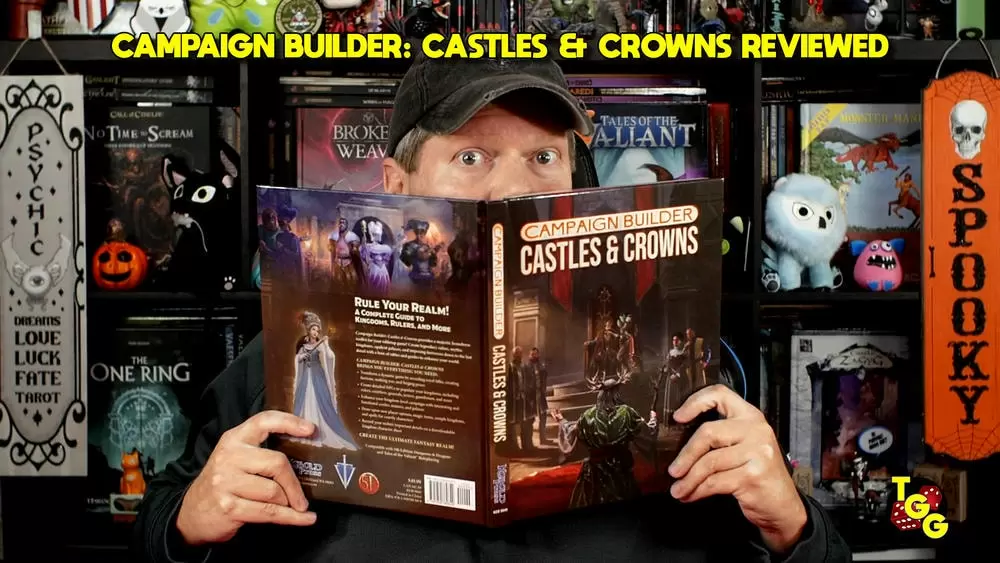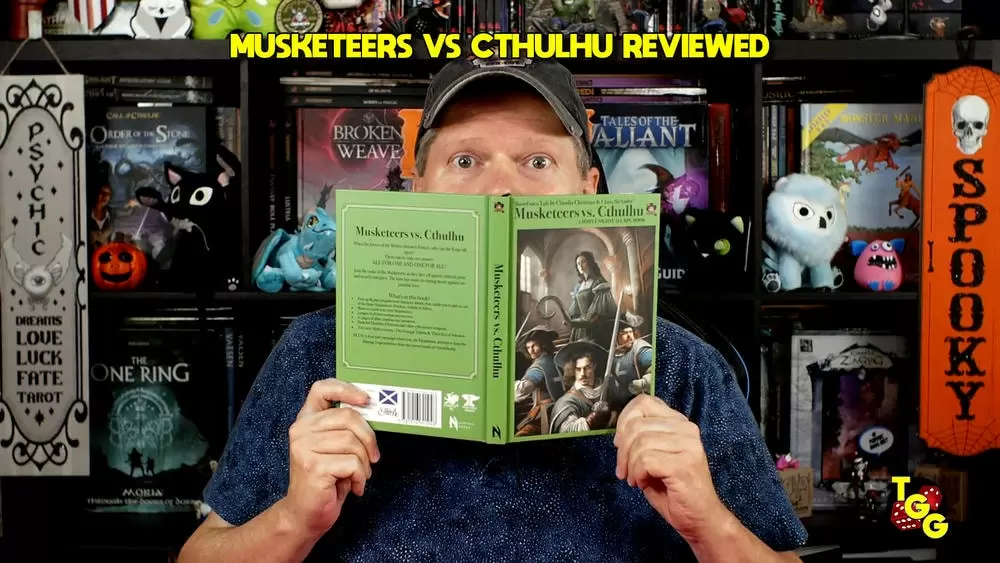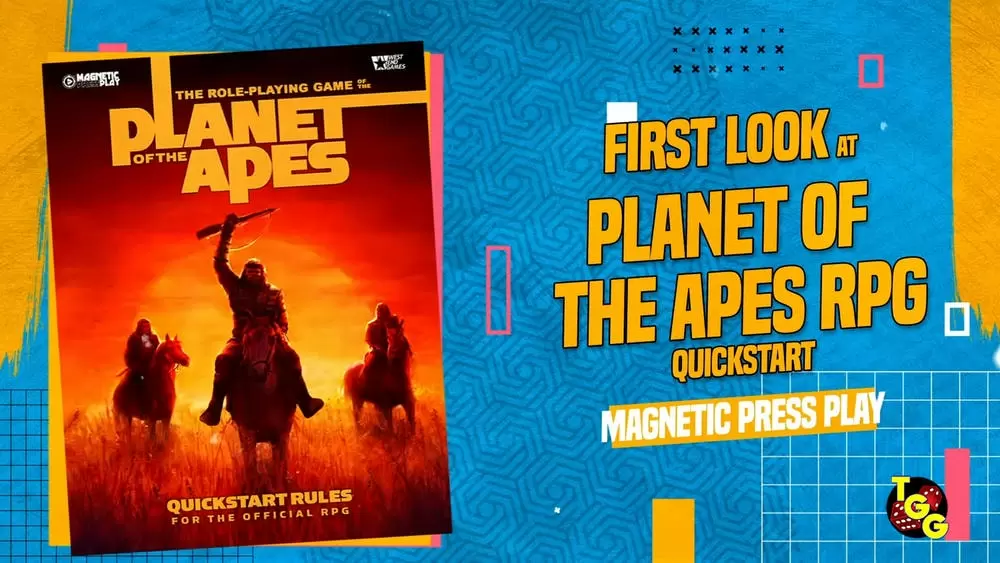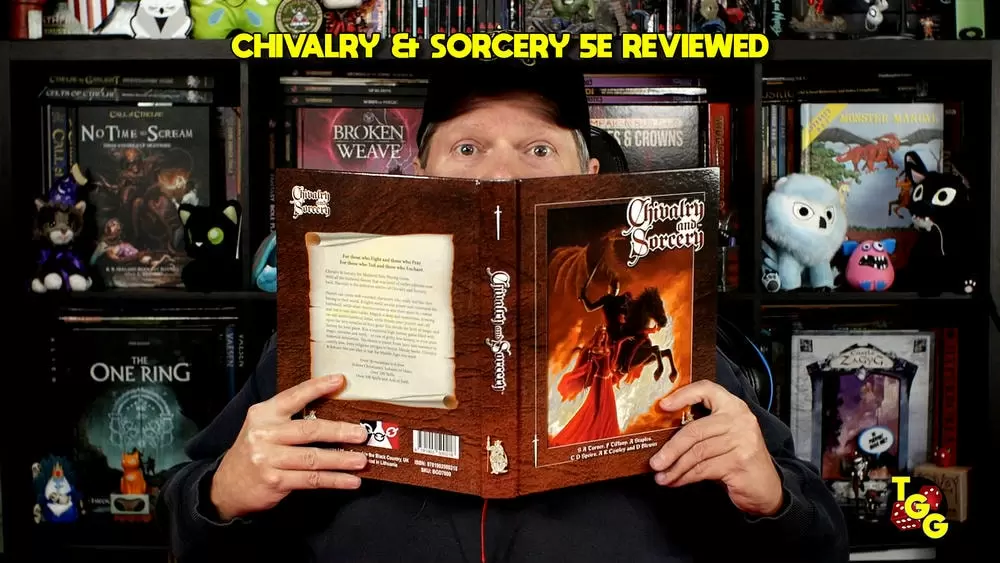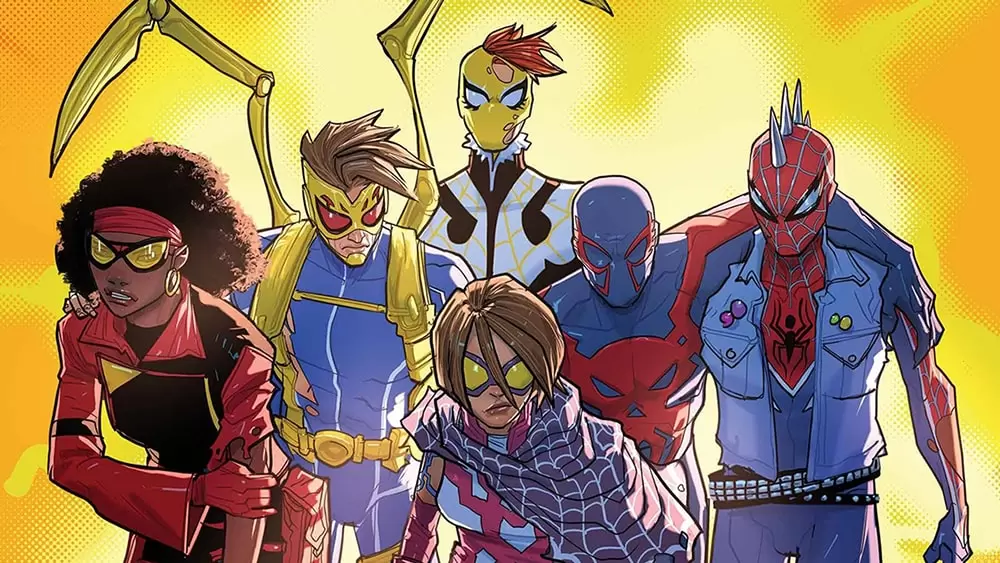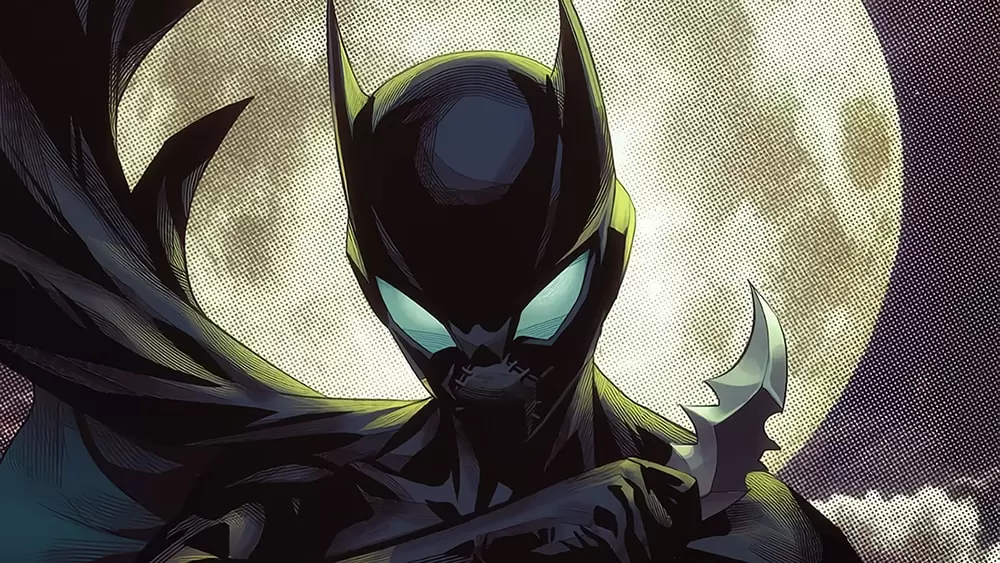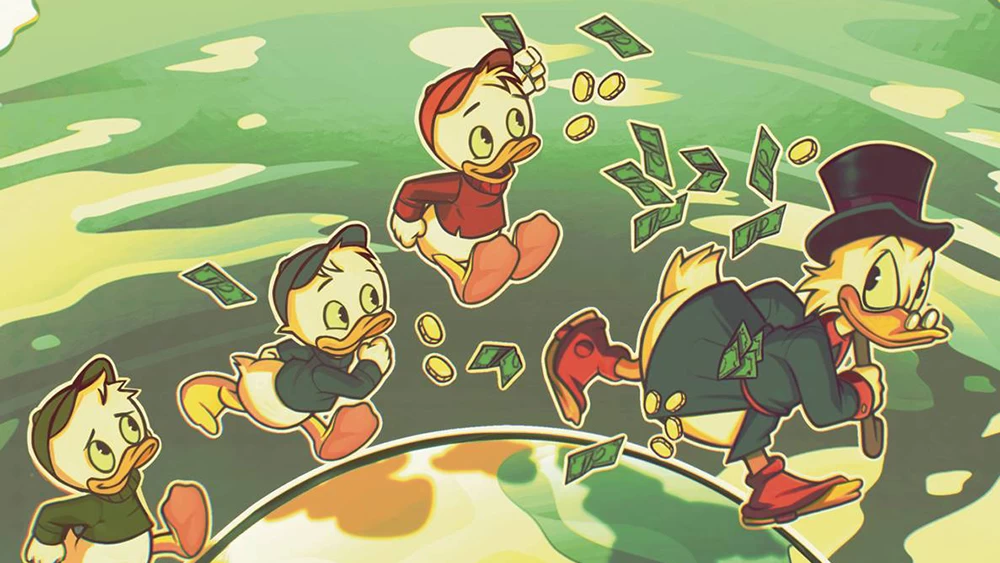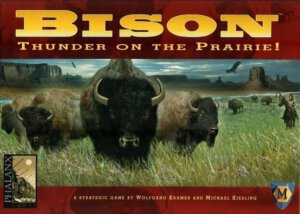
Publisher: Phalanx Games, Mayfair Games
Designers: Michael Kiesling and Wolfgang Kramer
Artists: Marek Szyszko and Franz Vohwinkel
Genre: Native American themed area control and resource management game
Year: 2006
Players: 2-4
Ages: 10+
Playing time: 60 minutes
MSRP: $30.00
With Thanksgiving (the US version) just around the corner, the time seemed right to do a short review of Bison: Thunder on the Prairie! The title comes with an exclamation point there at the end. I beg your indulgence.
I picked up this game shortly after it came out and played it a few times as a two-player game. Living on the Great Plains, I was drawn to the theme of Native Americans hunting bison, salmon, and wild turkeys (the tribe invoked in the game is the Nez Perce whose land is north and west of the plains, and we don’t have salmon anywhere near here, but I was happy enough to pick up the game). I was also intrigued by the strangely shaped land tiles. Imagine a hexagon with the sides alternating between convex or concave. The game played pretty well as a two-player and it kept my wife and I busy between feedings of our newborn daughter.
Recently, I was able to play it with more players, and I’ve come to like the game even more. But let me give you a sense of how it plays, first.
At its heart, Bison: Thunder on the Prairie! is an area control game with an intensity level between Carcassonne and El Grande. On a turn you have a sort list of things you can do, and one thing you must do: place a tile. On that tile you may, at the time you place it, put down zero to five hunters—and that’s the only time you can put new cubes on the board (yes, lamentably, the meeples are featureless cubes). Each tile has three types of terrain on it: mountain, prairie, and river. And they each have three animals on them, in various combinations (two turkeys and a bison, or three salmon). The animals are terrain-specific, too. You can guess the salmon, but the turkeys are always in the mountains and bison always in the prairies. As the tiles join up, they can form larger regions, so that a mountain region can extend over several tiles, a bit like farms in Carcassonne. Unlike those farms, however, the regions can have hunters from multiple players in them, each hunting group holding a space on an individual tile (that is, no two players can have hunters in the same terrain type on the same tile).
So what else do you do? You move your dudes around, set them up in teepees or canoes, and compete for the most access to resources. The teepees and canoes have little diamonds on them (one to four) and these diamonds represent your influence in a region. Most diamonds equals most influence equals most points. One action lets you build or expand a teepee (swap out the hunters on a terrain for an equal number of diamonds on the teepee). Another action lets you do the same thing with canoes. The last three actions are kinds of movement. One lets you summon all your hunters to one spot with another hunter. One lets you move up to five hunters one space. And the last lets you move up to five hunters up to three spaces each. You can cross enemy territory, but you can’t stop there.
One nicely refined bit of the game’s design is how each turn plays out. The first player chooses and action and takes it. Then the next player, and so on around the table. When you get back to the first player, they take their 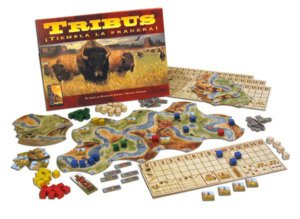
And it’s all about food—either turkey, bison, or salmon, and each animal has a separate track to keep a running total on how much you have. Each action you want to perform with your hunters costs food based on how many hunters are involved. Another fun touch: you don’t start out with the highest-diamond canoes or teepees, either. You have to buy them into your supply. Guess what that costs? Right. Food.
Each time you complete a season (everyone completes their actions) you score the animals, adding them to your running total. The scoring’s a little tricky, but you can get the hang of it pretty quickly; the trick to remember is how the sliding scale works because everyone scores something if they have a hunter in the region. In later rounds, you can have a pretty good store of protein, so some of the more dramatic moves become possible (place a tile well away from your other hunters, summon a group, set up a big teepee, steal all the turkeys away from your neighbor, for example). Still, you never feel—like you might in Notre Dame—that you’re stuck without options.
One of the people I played with described it as Carcassonne with meeple movement and that’s a fairly apt description. The tiles are strange, so seeing where you can place one before actually putting it down isn’t the easiest thing to do, and keeping the ideas of terrain and region separate in your mind is another small difficulty. But overall, this is a nice, light area control game. It’s fairly friendly (there are ways to score better than majority holders in a region if you’re tricky, for instance), and the economics and choices aren’t paralyzing. The theme’s a bit thin—you can’t move teepees or canoes once they’re placed, a bit odd for nomads—but you can work around that thinness (it’s a tent city! it’s a fishing camp!). Still, you can’t find a lot of games themed around Native Americans, especially a game set before the advent of European settlement. So if there’s a copy around, give it a play. I think you’ll be pleasantly surprised by this mostly overlooked little game.
- Titan Comics for February 21st, 2018 - Feb 17, 2018
- The Gardeners and the Panda?: A Review of Takenoko - Jan 25, 2012
- You Made a Time Machine Out of a DeLorean? Back to the Future – The Card Game Reviewed - Jan 8, 2012



